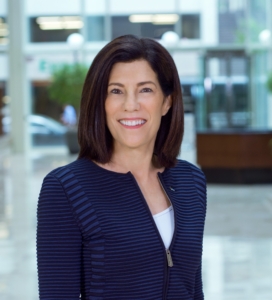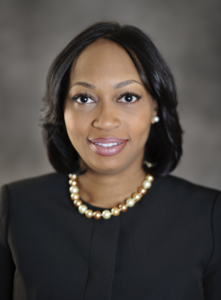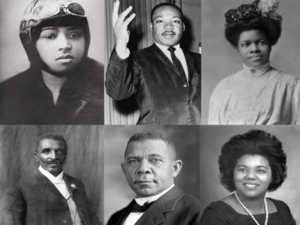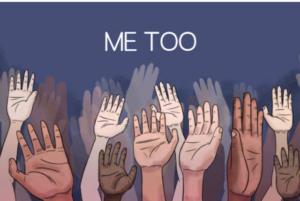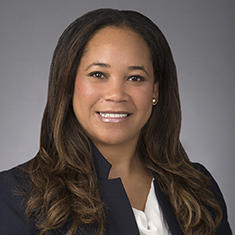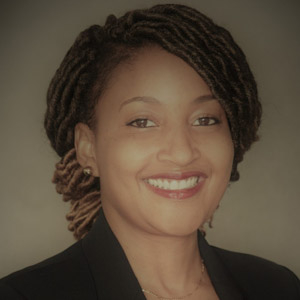 “Be bold, be brave and just be you. Don’t shrink to please the people around you,” says Wells Fargo Private Bank’s Kacy J. Gambles.
“Be bold, be brave and just be you. Don’t shrink to please the people around you,” says Wells Fargo Private Bank’s Kacy J. Gambles.
Kacy always had an interest in two things: people and numbers. When she thought about career choices she wanted to marry these two interests together. The discussion of finances was not exactly dinner table conversation, however through the perseverance and ‘scrappiness’ of her mother, Kacy was exposed to different job functions within the financial industry. Ultimately she was led to wealth management when she stumbled upon an advertisement to study for the CERTIFIED FINANCIAL PLANNERTM designation.
Kacy started her career at PNC Bank in Pittsburgh, PA in 2003 and held a number of positions in the company’s wealth management division, from an associate trust advisor & portfolio manager to a product manager covering the separately managed accounts and alternative investments platforms. Ultimately, she knew she enjoyed the client-facing side of the business and made the decision to obtain her MBA at The Tuck School of Business, Dartmouth College. In 2009 while finishing her MBA at Tuck, and attending the National Black MBA Association (NBMBAA) annual conference, she crossed paths with one of Wells Fargo’s senior leaders who invited her to join his California based team in the Private Bank in an investment management development program. She has served as an investment strategist managing high-net-worth clients’ portfolios and then moved into management as a regional investment manager. This path led to her 2017 promotion and her present day role as SVP leading a team of experienced financial professionals who help clients work toward their unique goals by providing investment management, trust and estate services, as well as specialized wealth services including legacy planning, real estate asset management, philanthropic, and business advisory services.
Being an African American executive, Kacy discusses her journey in the financial services industry and how proud she is to be navigating the journey as a woman of color every day, and acknowledges the power of sponsors who have advocated for her along the way.
“There aren’t many individuals who look like me and I have been able to navigate this industry with the support of great individuals of all types who took an interest in my career and my success.”
Gambles is keen to distinguish the difference between mentors and sponsors and urges people to understand the power of a sponsor who can truly advocate for you at the table where you are not seated. She believes more courageous conversations are the key to seeing change in the industry and in the need to advocate for hiring people with non-traditional backgrounds. And, that people should raise their hands to be matched with mentors and sponsors. She opines that Wells Fargo has a great programmatic approach to supporting women in the firm that she feels she has benefited from along the way.
“There is so much value in mentoring as it is a two directional relationship where both sides get to learn and address unconscious biases.”
She recounts recently going to a Tesla showroom and servicing shop and finding herself surprised at the number of female engineers; an example whereby we can all be caught unaware of the unconscious bias that can lurk in our brains if we are honest with ourselves in recognizing it.
Being a good manager is important to her and creating a team where people can be themselves is a continual goal of hers and she works to create space for all people to be themselves.
“When someone says thank you for listening and letting me be my authentic self and to be visible, I feel very proud. Diversity and ultimately inclusion means people can come to the table and feel like they are heard and this goes for ethnicity, gender, sexual orientation and even mental health diversity which is increasingly recognized.”
Change Agent
Inspiring and humble, Kacy is clearly motivated by being “the voice and the change” as she puts it “within the community and internally within the team”. She explains that a village helped raise her and she believes that coaching, inspiring, mentoring, developing and giving back is important to her in the work that she does inside and outside the firm.
“I am excited to be a change agent as how we (Wells Fargo) are seen in the community is important both in doing the best work to meet the wealth management goals of clients, and in solidifying an organization with great team members so that people can continue to believe in the organization.”
Kacy energetically talks about the increase of women owned businesses and within that the number of African American and Latinx women who are changing the lending culture by virtue of being the job creators and the product leaders in communities. She is excited by millennials and how they approach their careers and what their wealth needs will be in the future.
Tenacity on the Journey
Kacy reiterates tenacity as a trait that is helpful in building a career recounting that she got a lot of “no’s” but she chose to hear these as “not now” instead. She emphasizes the importance of being the owner of your career and figuring out the pathways to get more “yeses”. She believes that some barriers are organizational and can change with processes such as panel-based decisions in hiring but is forthright that individuals can self- impose their own limitations and believes that a “can do” attitude is crucial for success.
Kacy relays her advice that she would give to her younger self, “I tended to be quieter in meetings and I wish I had taken more chances. I was once advised that when someone thinks you are ready for an opportunity don’t insult them by saying you can’t. Now I realize that my advice to others is that you always can. You have the skills, resources, and examples. If you don’t see it then you can become the light for the people behind you.”
Outside of work she offers that her spiritual side is her foundation and that she was raised by strong women who remind her where she came from and keep her humble and that she has to “pull people up with me”.
Kacy enjoys travel with a philanthropic twist as a volunteer for Habitat for Humanity.
“I always leave feeling that the people building the houses get more than we give on these trips as it is the human side of connecting that matters and love still abounds and we as humans are resilient. It is very humbling.”

